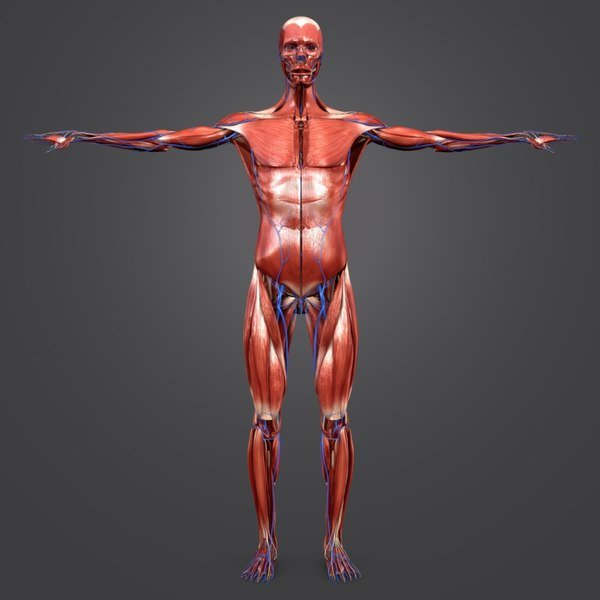The muscular system is the body’s largest system, normally comprising about 40 percent of body weight. There are three types of muscle found in the human body: Skeletal Muscle, Smooth Muscle and Cardiac Muscle (heart muscle).
Skeletal Muscle
Skeletal Muscles are those which attach to bones and have the main function of contracting to facilitate movement of our skeletons. They are also sometimes known as striated muscles due to their appearance. The cause of this ‘stripy’ appearance is the bands of Actin and Myosin which form the Sarcomere, found within the Myofibrils. Skeletal muscles are also sometimes called voluntary muscles because we have direct control over them through nervous impulses from our brains sending messages to the muscle. Contractions can vary to produce powerful, fast movements or small precision actions. Skeletal muscles also have the ability to stretch or contract and still return to their original shape.
Smooth Muscle
Smooth muscle is also sometimes known as Involuntary muscle due to our inability to control its movements, or unstriated as it does not have the stripy appearance of Skeletal muscle. Smooth muscle is found in the walls of hollow organs such as the Stomach, Oesophagus, Bronchi and in the walls of blood vessels. This muscle type is stimulated by involuntary neurogenic impulses and has slow, rhythmical contractions used in controlling internal organs, for example, moving food along the Oesophagus or constricting blood vessels during Vasoconstriction.

Cardiac Muscle (heart muscle)
This type of muscle is found solely in the walls of the heart. It has similarities with skeletal muscles in that it is striated and with smooth muscles in that its contractions are not under conscious control. However, this type of muscle is highly specialised. It is under the control of the autonomic nervous system, however, even without a nervous input contraction can occur due to cells called pacemaker cells. Cardiac muscle is highly resistant to fatigue due to the presence of a large number of mitochondria, myoglobin and a good blood supply allowing continuous aerobic metabolism

